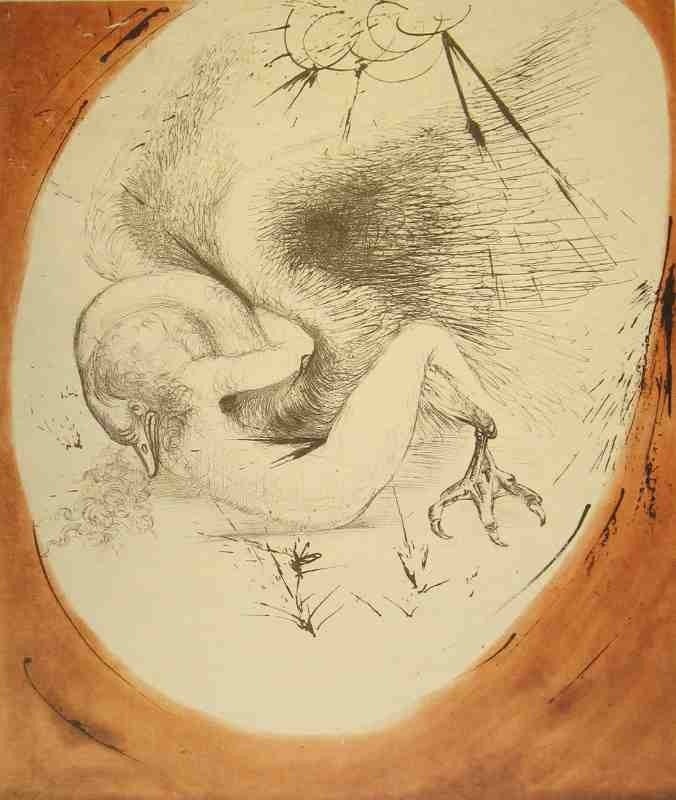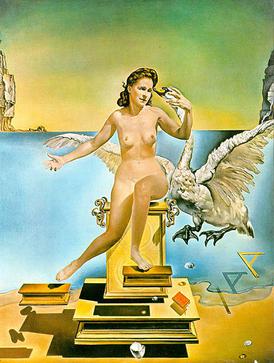Luca Cambiasi (18 November 1527 – 6 September 1585) was an Italian painter and draftsman, familiarly known as Lucchetto da Genova. Cambiasi was precocious, and at the age of fifteen he painted, along with his father, some subjects from Ovid's Metamorphoses on the facade of a house in Genoa. In 1544, at the age of seventeen, he was involved in the decoration of the Palazzo Doria, now the Prefettura. He aided in the vault decoration of the church of San Matteo. His Resurrection and Transfiguration altarpieces for San Bartolomeo degli Armeni date from c. 1560. In 1563, he painted a Resurrection for San Giovanni Battista in Montalto Ligure.
This was followed by frescoes for the Villa Imperiale at Genoa-Turalba (also called the Palazzo Imperiali Terralba) with a Rape of the Sabines (c. 1565) and the Palazzo Meridiana (formerly Grimaldi; also in 1565). In the Capella Lercari of the Duomo di San Lorenzo, Cambiasi frescoed a Presentation and Marriage of the Virgin in 1569, remainder of chapel by Castello.
The 1911 Britannica states that Cambiasi by his thirties began to decline in skill, though not at once in reputation, owing to the vexations brought upon him by a passion which he conceived for his sister-in-law. His wife having died, and the sister-in-law had taken charge of his house and children, he failed to procure a papal dispensation for marrying her.
In 1583 he accepted an invitation from Philip II to complete for the Escorial a series of frescoes begun by Castello; and the 1911 Encyclopædia states the principal reason for traveling to Spain was that he hoped royal influence would gain favor with the Vatican for his marriage plans, but this failed. In the Escorial he executed a Paradise on the vaulting of the church, with a multitude of figures. For this picture he received 2,000 ducats, probably the largest sum that had, up to that time, ever been given for a single work. His paintings in Spain, hew to strict religious thematic. More
Paolo Veronese (1528–1588)
Leda and the Swan, c. circa 1585
Oil on canvas
height: 121 cm (47.6 in); width: 100 cm (39.3 in)
Musée Fesc
Paolo Caliari, known as Paolo Veronese (1528 – 19 April 1588) was an Italian Renaissance painter based in Venice, most famous for large history paintings of both religious and mythological subjects. With Titian, who was at least a generation older, and Tintoretto, ten years older, he was one of the "great trio that dominated Venetian painting of the cinquecento" or 16th-century late Renaissance. Veronese is known as a supreme colorist, and after an early period with Mannerist influence turned to a more naturalist style influenced by Titian. More
Leda & the Swan
Greco-Roman mosaic
C3rd A.D
Museum of Cyprus, Nicosia
Leda and the Swan
Mural in Herculaneum (Italy) - c 150 b.C
In some versions, she laid two eggs from which the children hatched. In other versions, Helen is a daughter of Nemesis, the goddess who personified the disaster that awaited those suffering from the pride of Hubris.
Leonardo da Vinci.
Study for the Kneeling Leda (c. 1505 - 1507)
Drawing on paper
A standing figure of Leda almost entirely naked, with the swan at her and two eggs, from whose broken shells come forth four babies, This work, although somewhat dry in style, is exquisitely finished, especially in the woman's breast; and for the rest of the landscape and the plant life are rendered with the greatest diligence. Unfortunately the picture is in a bad state because it is done on three long panels which have split apart and broken off a certain amount of paint. More
Francesco Melzi after a lost painting by Leonardo da Vinci
Leda and the Swan, c. 1508-1515
Oil on canvas
height: 131 cm (51.5 in); width: 78 cm (30.7 in)
Galleria degli Uffizi, Florence.
Francesco Melzi (ca. 1491 - 1568/1570) was an Italian painter. He was the son of a Milanese noble family. Melzi joined the household of Leonardo da Vinci in 1506. He accompanied Leonardo on trips to Rome in 1513 and to France in 1517. As a painter, Melzi worked closely with and for Leonardo. Some works which, during the nineteenth century, were attributed to Leonardo are today ascribed to Melzi.[citation needed]
Upon Leonardo's death, Melzi inherited the artistic and scientific works, manuscripts, and collections of Leonardo, and would henceforth faithfully administer the estate. Melzi wrote to Leonardo's brothers to notify them of his death, and in this letter he described Leonardo's love for his pupils as "sviscerato e ardentissimo amore" a selfless and incandescent love.
Returning to Italy, Melzi married, and fathered a son, Orazio. When Orazio died on his estate in Vaprio d'Adda, his heirs sold the collection of Leonardo's works. More
Andrea Piccinelli, called Andrea Brescianino
SIENA CIRCA 1487 - AFTER 1525
LEDA AND THE SWAN
Oil on panel
68.5 x 129.8 cm.; 27 x 51 1/8 in.
Private collection
Likely painted in Siena in the 1520s this unusual panel was probably intended as the headboard to a bed in a marital chamber. It compares closely with other such works by the artist and his greatest Sienese influence Domenico Beccafumi; all of these, like this, depict a famous woman as their principle subject. More
Andrea del Brescianino or Dei Piccinelli was an Italian painter of the Renaissance period, active mainly in Siena. Together with his brother Raffaello they were known as the Brescianini of Siena. He was the son of a dancing-master at Siena, where he flourished from 1507 to 1525. He was the pupil of a Sienese painter, named Giovanni Battista Giusi, and they together painted an altar-piece, representing the Virgin and Child, with Saints, which is in the Siena Academy. In 1524, he painted the Baptism of Christ for the baptistery of the cathedral of the same city. In 1525 the brothers went to Florence, and in the same year Andrea, and probably Raffaello also, was registered in the Painters' Guild. A Holy Family by Andrea, who was the better artist of the two, is in the Uffizi Gallery at Florence, and another Holy Family, ascribed to him, is in the Berlin Gallery. The beautiful altar-piece, a Holy Family displayed at the church of Torre di Bibiano, long attributed to Baldassare Peruzzi, has been attributed to Andrea. The brothers appear to have worked under the influence of Fra Bartolommeo. More

Vincent Sellaer
Leda and the Swan, c. 1538
Oil on panel
109.5 × 88 cm (43.1 × 34.6 in)
Musée des Beaux-Arts, Valenciennes
Vincent Sellaer (1490 – 1564), was a Flemish Renaissance painter of mythological and religious subjects. Very few of the biographical details of this artist are known with any level of certainty. Although there is still no unanimous consensus, it is accepted by most scholars that Vincent Sellaer should be identified with the artist to whom the early 17th century biographer Karel van Mander referred as Vincent Geldersman. Van Mander described Sellaer as a good painter of allegories, such as Leda with two eggs, Susanna and the elders, and Cleopatra with the asp. Van Mander mentioned him in his Life of Frans Minnebroer as one of the notable painters of Mechelen. While many known versions of a Leda and the Swan have been attributed to Sellaer, none has survived that depicts a Leda with eggs. More
Pontormo (1494–1557)
Leda and the Swan. between 1512 and 1513
Oil on panel
Height: 55 cm (21.7 in). Width: 40 cm (15.7 in).
Uffizi Gallery
Jacopo Carucci (May 24, 1494 – January 2, 1557), usually known as Jacopo da Pontormo, was an Italian Mannerist painter and portraitist from the Florentine School. His work represents a profound stylistic shift from the calm perspectival regularity that characterized the art of the Florentine Renaissance. He is famous for his use of twining poses, coupled with ambiguous perspective; his figures often seem to float in an uncertain environment, unhampered by the forces of gravity. More
One of Pontormo's earliest works, Leda and the Swan, influenced by da Vinci’s own depiction of Leda, hangs in the Uffizi. Though, the piece is still sometimes argued to be a work of Sarto or possibly Perin del Vaga (1501 – 1547). More
Bacchiacca (1494–1557)
Leda and the Swan, 16th century
Oil on panel
Metropolitan Museum of Art
Francesco d'Ubertino Verdi, called Bachiacca (1494–1557) was an Italian painter of the Renaissance whose work is characteristic of the Florentine Mannerist style. He was born and baptized in Florence on March 1, 1494 and died there on October 5, 1557. He apprenticed in Perugino's Florentine studio, and by 1515 began to collaborate with Andrea del Sarto, Jacopo Pontormo and Francesco Granacci on painted furnishings for the bedroom of Pierfrancesco Borgherini and Margherita Acciauoli. In 1523, he again participated with Andrea del Sarto, Franciabigio and Pontormo in the decoration of the antechamber of Giovanni Benintendi. While he established a reputation as a painter of predellas and small cabinet pictures, he eventually expanded his output to include large altarpieces, such as the Beheading of St. John the Baptist, now in Berlin.
In 1540, Bachiacca became an artist at the court of Duke Cosimo I de' Medici and Duchess Eleanor of Toledo. In this capacity, Bachiacca's first major commission was to paint the walls and ceiling of the duke's private study with plants, animals and a landscape. Bachiacca also made cartoons for two series of tapestries, the Grotesque Spalliere (1545–49) and the Months (1550–1553), which were woven by the newly founded Medici tapestry works. All of these works either contain carefully observed illustrations of nature or display the artist's trademark method and style, in which Bachiacca combines figures, exotic costumes and other motifs acquired from Italian artists and German and Netherlandish prints into entirely new compositions. These cosmopolitan assemblages exhibited the most praiseworthy elements of both northern and southern European Renaissance art, which appealed to their courtly clientele. More

Antoine Coypel (1661–1722)
Leda and The Swan
Oil on canvas
National Trust for Scotland, Brodie Castle
Antoine Coypel (11 April 1661 – 7 January 1722) was a history painter, the more famous son of the French painter Noël Coypel.
Antoine Coypel was born in Paris. He studied under his father, with whom he spent four years at Rome. At the age of eighteen he was admitted into the Académie de peinture et de sculpture, of which he became professor and rector in 1707, and director in 1714. In 1716 he was appointed king's painter, and he was ennobled in the following year.
His great work of decoration was the ceiling of the Royal chapel at Versailles (1716), in the manner of the Roman Baroque. He also carried out large-scale paintings illustrating themes of the Aeneid for the Palais-Royal (1714–1717). More
The subject was rarely seen in the large-scale sculpture of antiquity, although a representation of Leda in sculpture has been attributed in modern times to Timotheos;
Roman marble possibly reflecting a lost work by Timotheos
Leda and the Swan
El Prado Museum, Madrid
Timotheus was a Greek sculptor of the 4th century BC, one of the rivals and contemporaries of Scopas of Paros, among the sculptors who worked for their own fame on the construction of the grave of Mausolus at Halicarnassus between 353 and 350 BC. He was apparently the leading sculptor at the temple of Asklepios at Epidaurus, c. 380 BC. To him is attributed a sculpture of Leda and the Swan in which the queen Leda of Sparta protected a swan from an eagle, on the basis of which a Roman marble copy in the Capitoline Museums is said to be "after Timotheus". The theme must have been popular, judging by the more than two dozen Roman marble copies that survive. The most famous version has been that in the Capitoline Museums in Rome, purchased by Pope Clement XIV from the heirs of Cardinal Alessandro Albani. A highly restored version is in the Museo del Prado, and an incomplete one is in the Yale University Art Gallery, New Haven, Connecticut. More
François Boucher (1703–1770)
Leda and the Swan, circa 1740
François Boucher (29 September 1703 – 30 May 1770) was a French painter in the Rococo style. Boucher is known for his idyllic and voluptuous paintings on classical themes, decorative allegories, and pastoral scenes. He was perhaps the most celebrated painter and decorative artist of the 18th century. He also painted several portraits of his patroness, Madame de Pompadour. More
Gianbettino Cignaroli, VERONA 1706-1770
LEDA AND THE SWAN
Oil on canvas
60 1/4 by 45 3/4 in.; 153.1 by 116 cm
Private collection
Giambettino Cignaroli (Verona, July 4, 1706 – Verona, December 1, 1770) was an Italian painter of the Rococo and early Neoclassic period. He was a pupil of Santo Prunato and Antonio Balestra and active mostly in the area of the Veneto. He became the director of the academy of painting and sculpture of Verona in December 1764. The Academy was subsequently known as Accademia Cignaroli. Among his many pupils were Giovanni Battista Lorenzi, Saverio Dalla Rosa, Domenico Mondini, Domenico Pedarzoli, and Cristopher Unterberger. His brother Giovanni Domenico Cignaroli was also a painter.
For the Austrian governor of Lombardy and a collector of antiquities, Count Karl von Firmian, Cignaroli painted two canvases on Greco-Roman episodes, a thematic preferred by Neoclassic painters: Death of Cato (1759) and Death of Socrates.
Giambettino was born into a family of artists, and this tradition continued after his death with his children. Artists from his family who were contemporaries and elders of Giambettino include his uncle Leonardo Seniore, and his two sons (cousins of Giambettino), Martino and Pietro. More
small-scale sculptures survive showing both reclining and standing poses, in cameos and engraved gems, rings, and terracotta oil lamps. Thanks to the literary renditions of Ovid and Fulgentius it was a well-known myth through the Middle Ages, but emerged more prominently as a classicizing theme, with erotic overtones, in the Italian Renaissance.

Heinrich Lossow (1840–1897)
Leda and the Swan, c. 19th century
Oil on wood.
55 x 43 cm.
Staatlichen Museen zu Berlin
Heinrich Lossow (10 March 1843 in Munich, Germany – 19 May 1897 in Schleissheim, Germany) was a German genre painter and illustrator. He was a prolific pornographer in his spare time. Lossow's father was Arnold Hermann Lossow, a Bremen sculptor. His father moved to Munich in 1820 to study under Ernst Mayer. In Munich, Arnold Hermann Lossow married and had three children: Carl Lossow in 1835, Friedrich Lossow in 1837, and Heinrich Lossow in 1843. The three boys had an affinity for art; Carl became a historical painter, while Friedrich became a wildlife painter. Heinrich would outlive all of his siblings.
He first trained under his father but would go onto study under Karl Theodor von Piloty at the Munich Academy of Fine Arts. He then travel through France and Italy perfecting his art.
His was an illustrator for publishers, including one for an edition of William Shakespeare's The Merry Wives of Windsor.
Later in his life, he served as a curator at the Schleissheim Palace More
"Leda and the Swan" is also sonnet by William Butler Yeats first published in1924. Combining psychological realism with a mystic vision, it describes the swan's rape of Leda. It also alludes to the Trojan war, which will be provoked by the abduction of Helen, who will be begotten by Zeus on Leda (along with Castor and Pollux, in some versions of the myth). Clytaemnestra, who killed her husband, Agamemnon, leader of the Greeks at Troy, was also supposed to have hatched from one of Leda’s eggs. The poem is regularly praised as one of Yeats's masterpieces. Camille Paglia, who called the poem "the greatest poem of the twentieth century," and said "all human beings, like Leda, are caught up moment by moment in the 'white rush' of experience

Jean Henry (1734–1784)
Leda and the Swan.
Oil on canvas
Museum of Fine Arts in Marseille
Jean-Henry D'arles (1734-1784) was a French landscape painter whose theatrically illuminated landscapes display a close observation of nature and its effects. He won first prize of the Academy of Painting and Sculpture in Marseille in 1753. D'Arles would also have been influenced by Joseph Vernet (1714-1789) whose 'Tempest' he would have seen at the 'Exhibition du Paysage Francais' in 1756. More
William Butler Yeats, LEDA AND THE SWAN:
A sudden blow: the great wings beating still
Above the staggering girl, her thighs caressed
By the dark webs, her nape caught in his bill,
He holds her helpless breast upon his breast.
How can those terrified vague fingers push
The feathered glory from her loosening thighs?
And how can body, laid in that white rush,
But feel the strange heart beating where it lies?
A shudder in the loins engenders there
The broken wall, the burning roof and tower
And Agamemnon dead.
Being so caught up,
So mastered by the brute blood of the air
Did she put on his knowledge with his power
Before the indifferent beak could let her drop?
Théodore Géricault
Leda and the Swan, c. 1780
Drawings
H. 0.21 m; L. 0.28 m
Louvre Museum
Jean-Louis André Théodore Géricault (26 September 1791 – 26 January 1824) was an influential French painter and lithographer, known for The Raft of the Medusa and other paintings. Although he died young, he was one of the pioneers of the Romantic movement.
Géricault's first major work, The Charging Chasseur, exhibited at the Paris Salon of 1812, revealed the influence of the style of Rubens and an interest in the depiction of contemporary subject matter. This youthful success, was followed by a change in direction: for the next several years Géricault produced a series of small studies of horses and cavalrymen. In the nearly two years that followed the 1814 Salon, he also underwent a self-imposed study of figure construction and composition, all the while evidencing a personal predilection for drama and expressive force.
A trip to Florence, Rome, and Naples (1816–17), ignited a fascination with Michelangelo. Rome itself inspired the preparation of a monumental canvas, the Race of the Barberi Horses, a work of epic composition and abstracted theme that promised to be "entirely without parallel in its time". In the event, Géricault never completed the painting, and returned to France. In 1821, he painted The Derby of Epsom. More
François-Édouard Picot (1786–1868)
Leda and the Swan, c. 1832
Oil on canvas
Private collection
François-Edouard Picot (Paris, 10 October 1786 – 15 March 1868, Paris) was a French painter during the July Monarchy, painting mythological, religious and historical subjects. Picot won the Prix de Rome painting scholarship in 1813 , and gained success at the 1819 Salon with his neoclassical L'Amour et Psyché..
He painted the The Crowning of the Virgin in the church of Notre-Dame-de-Lorette and had large commissions for the Galerie des Batailles. He exhibited at the Paris Salon between 1819 and 1839. Elected to the Paris Academy in 1836, Picot was also created an officer of the Legion of Honor in 1832. More
For the ancient Greeks, the constellation Cygnus, which means "swan", was related to the myth of Zeus and the goddess Nemesis. In order to escape from Zeus, Nemesis changed herself into many different animals. When she changed into a goose, Zeus immediately transformed himself into a wonderful swan and won the love of Nemesis.
The goddess became pregnant, delivered an egg and then abandoned it. Fortunately, a shepherd found the egg and gave it to Leda, the wife of Tyndareus, the king of Sparta. From that egg came Helen of Troy. Helen was so beautiful that Leda claimed her as her own child.
The constellation Cygnus was formed to celebrate the lovely swan. According to another version of the myth, Zeus transformed himself into a swan to court Leda, the queen of Sparta. and from that relationship, Leda had two children: Polydeuces and Helen. More

Eugène Delacroix
Leda and the Swan, c. 1834
fresco
63 x 88 cm
Musee Eugene Delacroix, Paris, France
One of a series of three made for the Abbaye de Valmont, now in Musée Delacroix in Paris.
Ferdinand Victor Eugène Delacroix ( 26 April 1798 – 13 August 1863) was a French Romantic artist regarded from the outset of his career as the leader of the French Romantic school. His use of expressive brushstrokes and his study of the optical effects of colour profoundly shaped the work of the Impressionists, while his passion for the exotic inspired the artists of the Symbolist movement. A fine lithographer, Delacroix illustrated various works of William Shakespeare, the Scottish writer Walter Scott and the German writer Johann Wolfgang von Goethe.
In contrast to the Neoclassical perfectionism of his chief rival Ingres, Delacroix took for his inspiration the art of Rubens and painters of the Venetian Renaissance. Dramatic and romantic content characterized the central themes of his maturity, and led him not to the classical models of Greek and Roman art, but to travel in North Africa, in search of the exotic. Friend and spiritual heir to Théodore Géricault, Delacroix was also inspired by Lord Byron, with whom he shared a strong identification with the "forces of the sublime", of nature in often violent action.
However, Delacroix was given to neither sentimentality nor bombast, and his Romanticism was that of an individualist. In the words of Baudelaire, "Delacroix was passionately in love with passion, but coldly determined to express passion as clearly as possible. More
William Etty, English, 1787-1849
Study for "Leda and the Swan", c.1840
Oil on canvas
16-3/4 x 21 in. (42.5 x 53.3 cm)
Norton Simon Art Foundation
William Etty (10 March 1787 – 13 November 1849) was an English artist best known for his history paintings containing nude figures. He was the first significant British painter of nudes and still lifes. Born in York, he left school at the age of 12 to become an apprentice printer in Hull. He completed his apprenticeship seven years later and moved to London, where in 1807 he joined the Royal Academy Schools. There he studied under Thomas Lawrence and trained by copying works by other artists. Etty earned respect at the Royal Academy of Arts for his ability to paint realistic flesh tones, but had little commercial or critical success. More
Helen was one of the most important figures in Greek history, her influence on the ancient Greek world cannot be overstated. She is unfairly blamed for the Trojan War that caused the deaths of thousands of mortal men and women as well as dozens of demigods. The Trojan War was planned and executed by the Immortals … Helen was simply a convenient tool to be used and then discarded to achieve the higher, divine goals of Zeus and the other Olympians.
Gustave Moreau (1826–1898)
Leda, c. 1865-1875
Oil on canvas
Musée Gustave Moreau
Gustave Moreau (6 April 1826 – 18 April 1898) was a French Symbolist painter whose main emphasis was the illustration of biblical and mythological figures. As a painter, Moreau appealed to the imaginations of some Symbolist writers and artists. Born in Paris, Moreau initially studied under the guidance of François-Édouard Picot and became a friend of Théodore Chassériau, whose work strongly influenced his own. His first painting was a Pietà which is now located in the cathedral at Angoulême. He showed A Scene from the Song of Songs and The Death of Darius in the Salon of 1853. In 1853 he contributed Athenians with the Minotaur and Moses Putting Off his Sandals within Sight of the Promised Land to the Great Exhibition.
Moreau became a professor at Paris' École des Beaux-Arts in 1891 and among his many students was fauvist painter Henri Matisse.
Moreau died in Paris and was buried there in the Cimetière de Montmartre.
During his lifetime, Moreau produced more than 8,000 paintings, watercolors and drawings, many of which are on display in Paris' Musée national Gustave Moreau at 14 rue de la Rochefoucauld (9th arrondissement). The museum is in his former workshop, and began operation in 1903. André Breton famously used to "haunt" the museum and regarded Moreau as a precursor of Surrealism.

Arturo Michelena (1863–1898)
Leda y el cisne, c. 1887
Oil on canvas
Galería de Arte Nacional
Francisco Arturo Michelena Castillo (16 June 1863 – 29 July 1898) was a Venezuelan painter born in Valencia, Carabobo State. He began to paint at a young age under his father's tutelage. Traveled to Paris where he studied in the famous Académie Julian. He was the first Venezuelan artist to succeed overseas and one of the most important Venezuelan painters of the 19th century. More on Francisco Arturo Michelena Castillo
Paul Cézanne (1839–1906)
Leda and the Swan, between circa 1880 and circa 1882
Oil on canvas
59,8 x 75 cm
Barnes Foundation
Paul Cézanne (19 January 1839 – 22 October 1906) was a French artist and Post-Impressionist painter whose work laid the foundations of the transition from the 19th-century conception of artistic endeavour to a new and radically different world of art in the 20th century. Cézanne's often repetitive, exploratory brushstrokes are highly characteristic and clearly recognizable. He used planes of colour and small brushstrokes that build up to form complex fields. The paintings convey Cézanne's intense study of his subjects.
Cézanne is said to have formed the bridge between late 19th-century Impressionism and the early 20th century's new line of artistic enquiry, Cubism. Both Matisse and Picasso are said to have remarked that Cézanne "is the father of us all." More
Léon François Comerre (French, 1850–1916)
The Triumph of the Swan/ Leda and the swan, c.1908
Oil on Canvas
62.2 x 91.8 cm. (24.5 x 36.1 in.)
Private collection
Léon François Comerre (10 October 1850 – 20 February 1916) was a French academic painter, famous for his portraits of beautiful women. He was born in Trélon, in the Département du Nord, the son of a schoolteacher. He moved to Lille with his family in 1853. From an early age he showed an interest in art and became a student of Alphonse Colas at the École des Beaux-Arts in Lille, winning a gold medal in 1867. From 1868 a grant from the Département du Nord allowed him to continue his studies in Paris at the famous École nationale supérieure des Beaux-Arts in the studio of Alexandre Cabanel. There he came under the influence of orientalism.
Comerre first exhibited at the Paris Salon in 1871 and went on to win prizes there in 1875 and 1881. In 1875 he won the Grand Prix de Rome for his painting "L’Ange annonçant aux bergers la naissance du Christ" (The Angel announcing the birth of Christ to the shepherds). This led to a scholarship at the French Academy in Rome from January 1876 to December 1879. In 1885 he won a prize at the "Exposition Universelle" in Antwerp. He also won prestigious art prizes in the USA (1876) and Australia (1881 and 1897). He became a Knight of the Legion of Honour in 1903. More

Giovanni Boldini (1842 – 1931)
Leda with the swan
Oil, canvas
43 x 49 cm
I have no further description, at this time
Giovanni Boldini (31 December 1842 in Ferrara, Italy – 11 July 1931 in Paris, France) was an Italian genre and portrait painter. According to a 1933 article in Time magazine, he was known as the "Master of Swish" because of his flowing style of painting. Boldini was born in Ferrara, the son of a painter of religious subjects, and in 1862 went to Florence for six years to study and pursue painting. He only infrequently attended classes at the Academy of Fine Arts, but in Florence, met other realist painters known as the Macchiaioli, who were Italian precursors to Impressionism. Their influence is seen in Boldini's landscapes which show his spontaneous response to nature, although it is for his portraits that he became best known.
Moving to London, Boldini attained success as a portraitist. He completed portraits of premier members of society. From 1872 he lived in Paris, where he became a friend of Edgar Degas. He also became the most fashionable portrait painter in Paris in the late 19th century, with a dashing style of painting which shows some Macchiaioli influence and the style reminds us the work of younger artists, such as John Singer Sargent and Paul Helleu. He was nominated commissioner of the Italian section of the Paris Exposition in 1889, and received the Légion d'honneur for this appointment.
A Boldini portrait of his former muse Marthe de Florian, a French actress, was discovered in a Paris flat in late 2010, hidden away from view on the premises that were unvisited for 70 years. The portrait has never been listed, exhibited or published and the flat belonged to de Florian's granddaughter who went to live in the South of France at the outbreak of the Second World War and never returned. A love-note and a biographical reference to the work painted in 1888, when the actress was 24, cemented its authenticity. The full length portrait of the lady in the same clothing and accessories, but less provocative, hangs in the New Orleans Museum of Art. More

Odilon Redon
Leda and the Swan
Watercolour
16" x 24"
Private collection
Odilon Redon, born Bertrand-Jean Redon; ( April 20, 1840 – July 6, 1916) was a French symbolist painter, printmaker, draughtsman and pastellist. He was born in Bordeaux, Aquitaine, to a prosperous family. Redon started drawing as a child; and, at the age of ten, he was awarded a drawing prize at school. He began the formal study of drawing at fifteen. He briefly studied painting there under Jean-Léon Gérôme in 1864.
He took up sculpting, and Rodolphe Bresdin instructed him in etching and lithography. His artistic career was interrupted in 1870 when he joined the army to serve in the Franco-Prussian War.
At the end of the war, he moved to Paris and resumed working almost exclusively in charcoal and lithography.It was not until 1878 that his work gained any recognition with Guardian Spirit of the Waters; he published his first album of lithographs 1879. Still, Redon remained relatively unknown until the appearance in 1884 of a cult novel by Joris-Karl Huysmans titled À rebours (Against Nature). The story featured a decadent aristocrat who collected Redon's drawings.
Baron Robert de Domecy (1867–1946) commissioned the artist in 1899 to create 17 decorative panels for him. The compositions for the château de Domecy in 1900–1901 were his most radical compositions to that point and marked his transition from ornamental to abstract painting. The landscape details do not show a specific place or space. Only details of trees, twigs with leaves, and budding flowers in an endless horizon can be seen. The colours used are mostly yellow, grey, brown and light blue. The influence of the Japanese painting style found on folding screens byōbu is discernible in his choice of colours and the rectangular proportions of most of the up to 2.5 metres high panels. Fifteen of them are located today in the Musée d'Orsay, acquisitioned in 1988.
Domecy also commissioned Redon to paint portraits of his wife and their daughter Jeanne, two of which are in the collections of the Musée d'Orsay and the Getty Museum in California.
In 1903 Redon was awarded the Legion of Honor. His popularity increased when a catalogue of etchings and lithographs was published by André Mellerio in 1913; that same year, he was given the largest single representation at the New York Armory Show. More

Otto Dix (1891 – 1969)
Leda, c. 1919
Oil on canvas
40 13/16 x 31 13/16 in. (103.66 x 80.8 cm)
LA County Museum of Art
The first painting was by Leonardo da Vinci, created c1515 during the Italian Renaissance; this Leda is by Otto Dix, created more than 400 years later. In Leonardo’s naturalistic picture, Leda’s image resembles a human with shading and his landscape is true to life. Dix, however, distorts Leda both geometrically and with color to describe the force of the scene. It is important to note that neither Leda depiction is “correct.” More accurately, each depiction could be described as representative of the context in which it was made. For Leonardo, his depiction showcases the classic. More
Wilhelm Heinrich Otto Dix (2 December 1891 – 25 July 1969) was a German painter and printmaker, noted for his ruthless and harshly realistic depictions of Weimar society and the brutality of war. Along with George Grosz, he is widely considered one of the most important artists of the Neue Sachlichkeit. More
LOUIS ICART, (French 1888-1950)
Leda and the Swan
Hand Colored etching
Signed lower right
Image size 20 inches x 30.75 inches (50.8 x 78 cm)
Private collection
Louis Icart Laurent Justin , born in 1888 in Toulouse and died in 1950 in Paris, is a painter, engraver and illustrator.
Impressed by its designer, his aunt made the move to Paris: she showed his work to the House Valmont, milliner to the Belle Époque . Louis Icart was then introduced in the illustration media for the fashion press. He drew for periodic Theatrical Reviews and for home catalogs and couture .
Trained in carving, he presented his original works to the Salon comedians. His portraits of women, Parisian, began to appeal to the public.
He was a pilot during the First World War. He flew in several air missions, but did not stop drawing.
In 1920, he exhibited at the gallery Simonson in Paris, then in 1922 in New York's Belmaison gallery, where he exhibited more than thirty paintings in the Art Deco style. Following this exhibition, his prints experience some success in America, until 1932.
His work includes over five hundred engravings. He also participated in the illustration of thirty books, including a number of erotic illustrations.
During the Occupation , he composed an engraved series called Exodus .
His work was forgotten after the war, but aroused new interest when, in 1970 , part of his first paintings were found in the attic of an art school
His works were first exhibited in North America in 1945 and he subsequently achieved even greater success in his last years.
More on Louis Icart
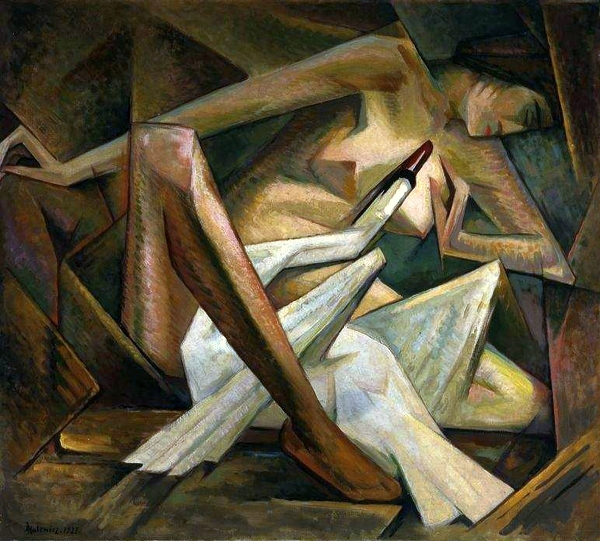
Jerzy Hulewicz
Leda and the swan, c. 1928
Oil on canvas
90 × 100 cm (35.4 × 39.4 in)
National Museum in Warsaw
Jerzy Teodor Hulewicz (born July 4, 1886 in Kościanki , died July 1, 1941 in Warsaw ) - writer, art theoretician, graphic artist and painter representing the expressionist trend.
In 1916, together with his brothers Bohdan and Witold, he founded the Ostoja Publishing Company in Poznań. On October 1, 1917, on the initiative and with the financial support of Jerzy Hulewicz, the first issue of the biweekly " Zdrój " was published. In the years 1917–1922, Hulewicz was its editor and artistic director. He participated in the Greater Poland Uprising , and in the years 1919–1920 he volunteered in the 5th Legions' Infantry Regiment [3] . In 1921, together with his brother Witold, he initiated the establishment of the Poznań branch of the Polish Writers' Union . In 1926 he moved to Warsaw. At that time, he collaborated with the magazines " Kurier Poranny " and "Zwierciadło".
Paul Mathias Padua
Leda mit dem Schwan, c. 1939
I have no further description, at this time
Paul Padua (15. November 1903 in Salzburg; 22. August 1981 in Rottach-Egern) was a self-taught painter of portraits, landscapes, still life and genre scenes, Padua was born on November 15, 1903 in Salzburg, Austria and was raised by his grandparents in Bavaria, Germany. He discontinued his brief studies at the Academy in Munich to concentrate on his painting, with his early work mainly influenced by the work of Wilhelm Leibl. In 1922 he became a member of the artist association in Munich and exhibited his paintings at regional venues. He received numerous awards and prices, including the Georg-Schicht-Preis in 1928 (portraiture); the Albrecht Durer Preis of the city of Nuremberg in 1930; Lenbachpreis of the city of Munich in 1937, 1938 and 1940. He portrayed composers Richard Strauss, Hans Pfi ... More
At the beginning of World War II, Padua worked at a propaganda company. He was drafted as a war painter. After a slight injury during the Western campaign, he was sent back to Germany in May 1940. Until 1943 he painted some of the most famous images of the German Nazi propaganda art, about "The leader speaks" in which Adolf Hitler is touted as the essence of the National Socialist conception of religion.
PAUL MULLER
Leda and the Swan
oil on canvas
31 by 22 inches (78.7 by 55.9 cm)
Private collection
Paul Muller (Russian/American) was born in Estonia. At the age of 16 he joined the Russian Army where he was a musician with the "Labe Guard", the Czar's personal eight regiments. Following the war he worked in Budapest, then studied in Prague, Dresden, and in his native Estonia. There he worked as a sketch artist for a newspaper.
Paul Muller came to the United States in 1926 and settled in New York City. He worked as an illustrator for the Encyclopedia Britannica. He also worked as a guard in the Federal Reserve Bank, Pitney Bowes Engraving Service, where he designed for the government one of the first meter-stamp postmarks. But he had a drinking problem, and ended his life as a building superintendent. During these later years he kept painting but his compositions became very phantasmagoric, often mixing references to war events and religious figures.
He died in New York in 1970. More

Parkes, Michael (American, b. 1944) -
Leda and the Swan - 2005
I have no further description, at this time
Born in 1944, Michael Parkes studied graphic art and painting at the University of Kansas and then traveled for three years through Asia and Europe. In 1975, Michael Parkes settled in Spain, where he now lives. Throughout his career, numerous international exhibitions underline the importance of Parkes’ work. Michael Parkes is both a uniquely talented painter and master of the art of original stone lithography. More
Adam Miller
Leda and the Swan, c. 2008
Children of Zeus
I have no further description, at this time
Born in 1979 in Oregon, Adam Miller began an apprenticeship to artist Allen Jones at thirteen years old and at Sixteen, was accepted to the Florence Academy Of Art in Florence and continued his studies under Michael John Angel in Florence. For the next four years Miller traveled throughout Europe studying the workof the Baroque and Mannerist painters. More
Henri Matisse
Leda and the Swan. 1944-46
Triptych
Oil on wood panel
Private collection
Henri Émile Benoît Matisse was a French artist, leader of the Fauve group, regarded as one of the great formative figures in 20th-century art, a master of the use of color and form to convey emotional expression.
Henri Matisse was born in December of 1869 in Le Cateau, France. He began painting during a convalescence from an operation, and in 1891 moved to Paris to study art. Matisse became an accomplished painter, sculptor and graphic designer, and one of the most influential artists of the 1900s. More
Salvador Dali
Leda and the Swan 1963
Etching
19.9 x 15.96 in
Edition #: LVIII/C
Salvador Dalí
Leda Atomica, c. 1949
Oil on canvas
61.1 cm × 45.3 cm (24.1 in × 17.8 in)
Dalí Theatre and Museum
Leda Atomica is a painting by Salvador Dalí, made in 1949. The picture depicts Leda, the mythological queen of Sparta, with the swan. Leda is a frontal portrait of Dalí's wife, Gala, who is seated on a pedestal with a swan suspended behind and to her left. Different objects such as a book, a set square, two stepping stools and an egg float around the main figure. In the background on both sides, the rocks of Cap Norfeu (on the Costa Brava in Catalonia, between Roses and Cadaqués) define the location of the image. More
Dalí began painting his Leda in 1945, in the United States. The painting depicts Leda face-on, sitting on a pedestal, and with her left hand caressing a swan approaching her as if to kiss her. Around the main figure are various objects such as a book, a set square, an egg which might represent the fruit of the union between Leda and the swan, from which the twins were born. In the background are the rocks of Cape Norfeu, situated between Roses and Cadaqués, that serves as a reference to the painter's homeland.
Leda Atòmica was executed following the divine proportions conceived by Luca Paccioli, a painter from the Italian Renaissance period. Leda and the swan are set in a pentagon inside of which is a five-point star that Dalí sketched several times. The artist calculated the harmony of the references by following the rules of the mathematician Matila Ghyka, who, at the time, was teaching at the University of San Diego. His works showed that divine proportion lies at the foundation of any work. Dalí, unlike his contemporaries who thought that mathematics distracted from or interrupted artistic inspiration, considered that any work of art, to be such, had to be based on composition and calculation.
His wife and muse sat as his model, and in Dalí's interpretation we see that love is treated in a more spiritual manner than it is in the work of other painters, who saw the more carnal side of the myth... More
Salvador Domingo Felipe Jacinto Dalí i Domènech, Marqués de Dalí de Pubol (11 May 1904 – 23 January 1989), was a prominent Spanish surrealist painter born in Figueres, Catalonia, Spain.
Dalí was a skilled draftsman, best known for the striking and bizarre images in his surrealist work. His painterly skills are often attributed to the influence of Renaissance masters.His best-known work, The Persistence of Memory, was completed in August 1931. Dalí's expansive artistic repertoire included film, sculpture, and photography, in collaboration with a range of artists in a variety of media.
Dalí attributed his "love of everything that is gilded and excessive, my passion for luxury and my love of oriental clothes" to an "Arab lineage", claiming that his ancestors were descended from the Moors.
Dalí was highly imaginative, and also enjoyed indulging in unusual and grandiose behavior. His eccentric manner and attention-grabbing public actions sometimes drew more attention than his artwork, to the dismay of those who held his work in high esteem, and to the irritation of his critics. More
Francesca Woodman
Leda and The Swan/ Lucy with Goose, 1977
Gelatin silver print
13.6 x 13.7 cm. (5 3/8 x 5 3/8 in.)
Private collection
Francesca Stern Woodman (April 3, 1958 – January 19, 1981) was an American photographer best known for her black and white pictures featuring either herself or female models. Many of her photographs show young women who are nude, blurred (due to movement and long exposure times), merging with their surroundings, or whose faces are obscured. Her work continues to be the subject of much critical acclaim and attention.
Woodman attended public school in Boulder, Colorado, between 1963 and 1971, except for second grade, which she attended in Italy, where the family spent many summers between school years. She began high school in 1972 at Abbot Academy, a private Massachusetts boarding school. There, she began to develop her photographic skills and became interested in the art form. Woodman graduated from the public Boulder High School in 1975. Through 1975, she spent summers with her family in Italy in the Florentine countryside, where the family lived on an old farm.
Beginning in 1975, Woodman attended the Rhode Island School of Design (RISD) in Providence, Rhode Island. She studied in Rome between 1977 and 1978 in a RISD honors program. She returned to Rhode Island in late 1978 to graduate from RISD.
Woodman moved to New York City in 1979 "to make a career in photography." She sent portfolios of her work to fashion photographers, but "her solicitations did not lead anywhere". In the summer of 1980, she was an artist-in-residence at the MacDowell Colony in Peterborough, New Hampshire.
In late 1980, Woodman became depressed due to the failure of her work to attract attention and to a broken relationship. She survived a suicide attempt in the autumn of 1980, after which she lived with her parents in Manhattan.
On January 19, 1981, Woodman died by suicide, jumping out of a loft window of a building on the East Side of New York. An acquaintance wrote, "things had been bad, there had been therapy, things had gotten better, guard had been let down". Her father has suggested that Woodman's suicide was related to an unsuccessful application for funding from the National Endowment for the Arts. More
 Norman Parkinson
Norman Parkinson
Leda & the Swan
Silvergelatin
35 2/5 × 35 2/5 in | 90 × 90 cm
Private collection
Norman Parkinson CBE (21 April 1913 – 15 February 1990) was an English portrait and fashion photographer. His work revolutionised British fashion photography, as he moved his subjects out of the studio and used outdoor settings. While serving as a Royal Air Force photographer in World War II, he started with Vogue magazine, discovering several famous models. He became an official royal photographer in 1969, taking photographs for Princess Anne's 19th birthday and the Investiture portrait of King Charles III as Prince of Wales. Many other royal portraits included official portraits of Queen Elizabeth The Queen Mother for her 75th birthday. He was known for using elements of humour in his photographs. Parkinson received many honours during his life including the Royal Photographic Society's Progress Medal, the Lifetime Achievement Award of the American Society of Magazine Photographers, a Google Doodle, and a British postage stamp.
More on Norman Parkinson
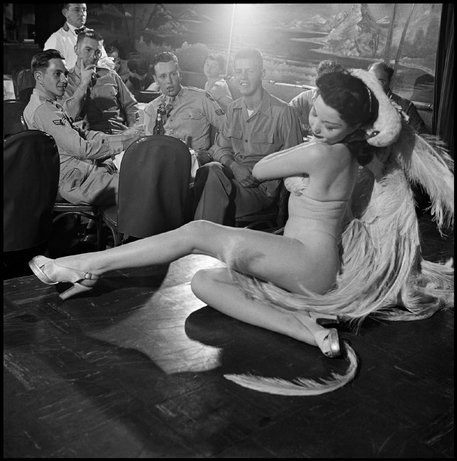
Faith Arlen‘s“Leda and the Swan,“ i
From Burt Glinn's "Stripper at Club Samoa on 52nd Street,” c. 1949.
Esther Sarto
Leda & the Swan, c. 2023
Watercolour, gouache & acrylic medium on watercolour paper.
43 x 53 cm.
Private collection
Esther Sarto is an emerging contemporary artist, who was born in Denmark, in 1992.
Esther Sarto is best known for producing figurative work. Often seen as the contrary of abstraction, figurative art also subsists beyond just a simple representation of reality.
Sarto’s paintings depict a specific world beautified, one where all animals are equal, life feeds into itself and death is just the feeding of another creature of equal import. Sarto uses a soft palette for the harsh nature of her subject matter — the predator and prey are rendered as parallel versions, the meat and egg the same as the mother and child. More on Ester Sarto
Please visit my other blogs: Art Collector, Mythology, Marine Art, Portrait of a Lady, The Orientalist, Art of the Nude and The Canals of Venice, Middle East Artists, 365 Saints, 365 Days,
and Biblical Icons,
also visit my Boards on Pinterest and my art
stores at deviantart and Aaroko
Images are copyright of their respective owners, assignees or others.
Some Images may be subject to copyright
I don't own any of these images - credit is always given when due unless
it is unknown to me. if I post your images without your permission, please tell
me.
Ads are shown only to compensate the hosting expenses.
If you enjoyed this post, please share with friends and family.
Thank you for visiting my blog and also for liking its posts and pages.
Please note that the content of this post primarily consists of articles
available from Wikipedia or other free sources online.
















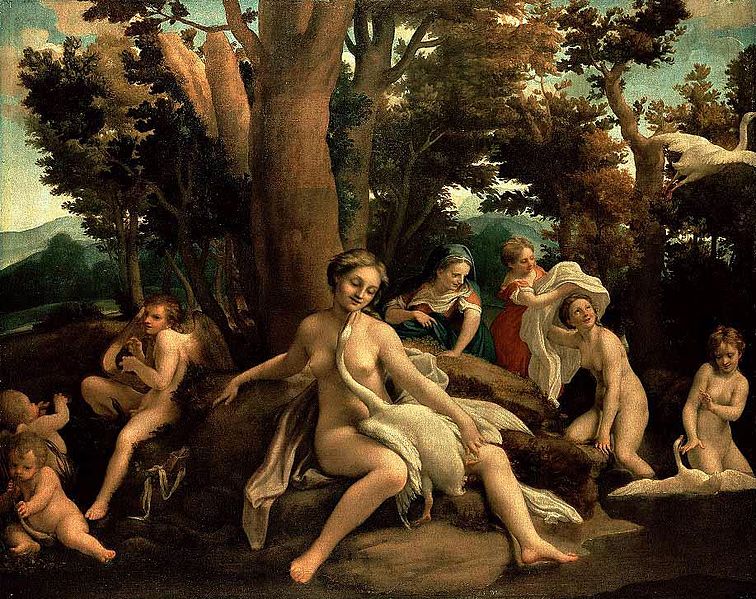


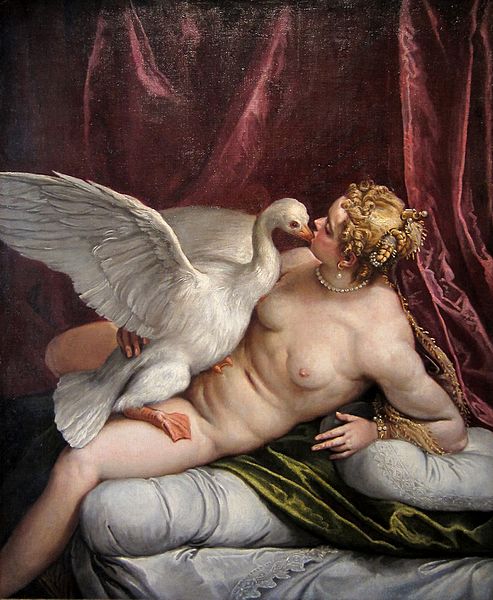


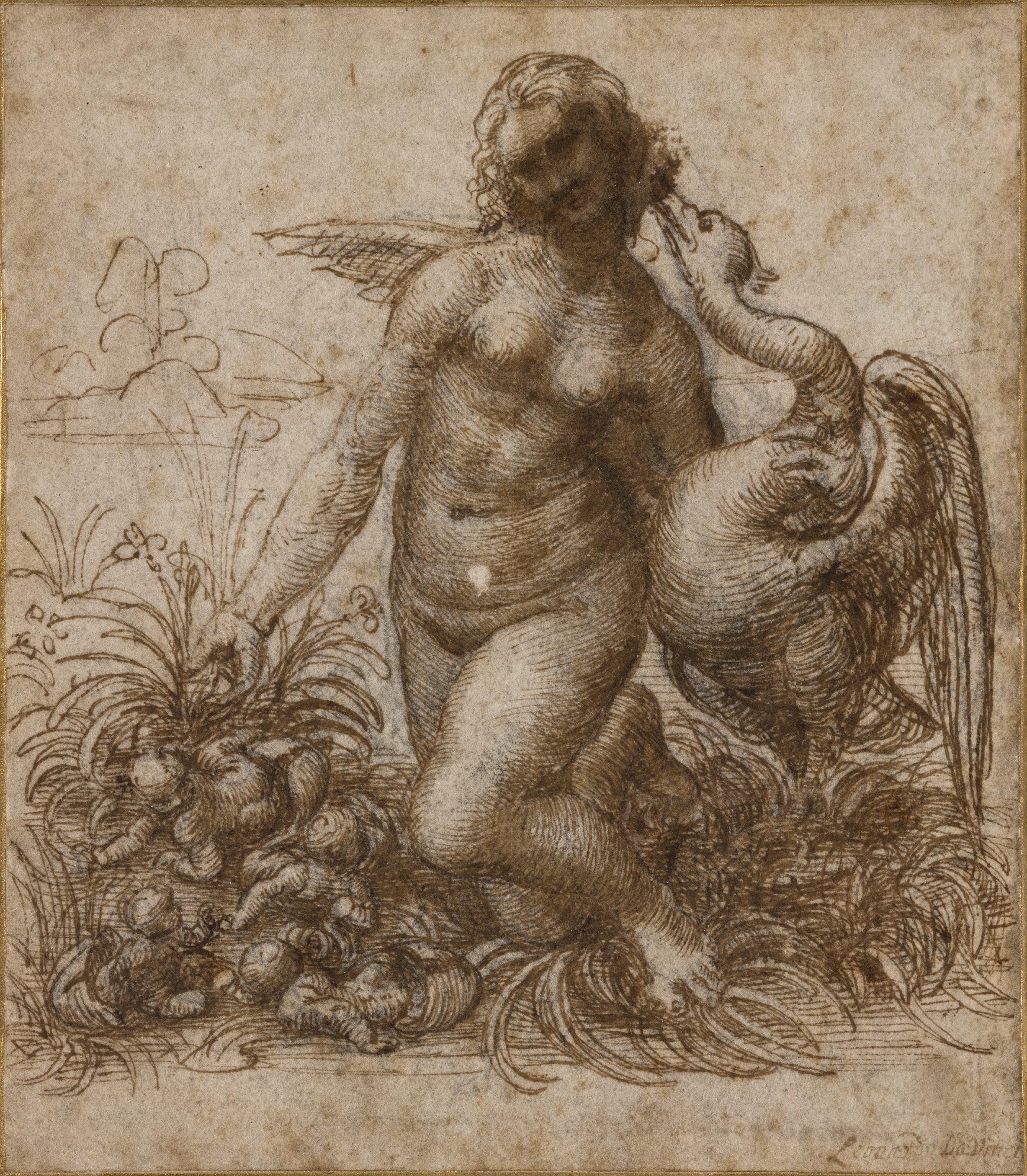




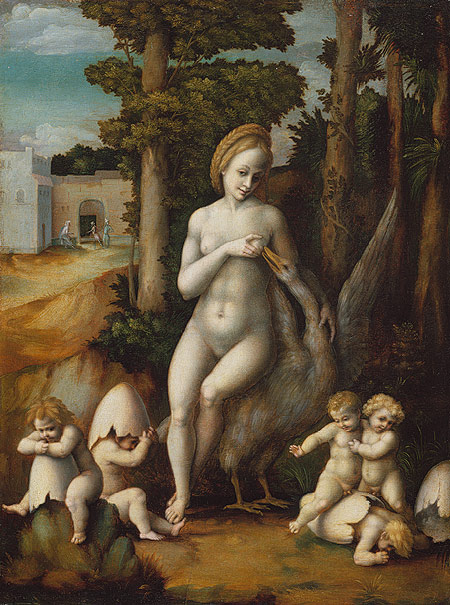













.jpg)










